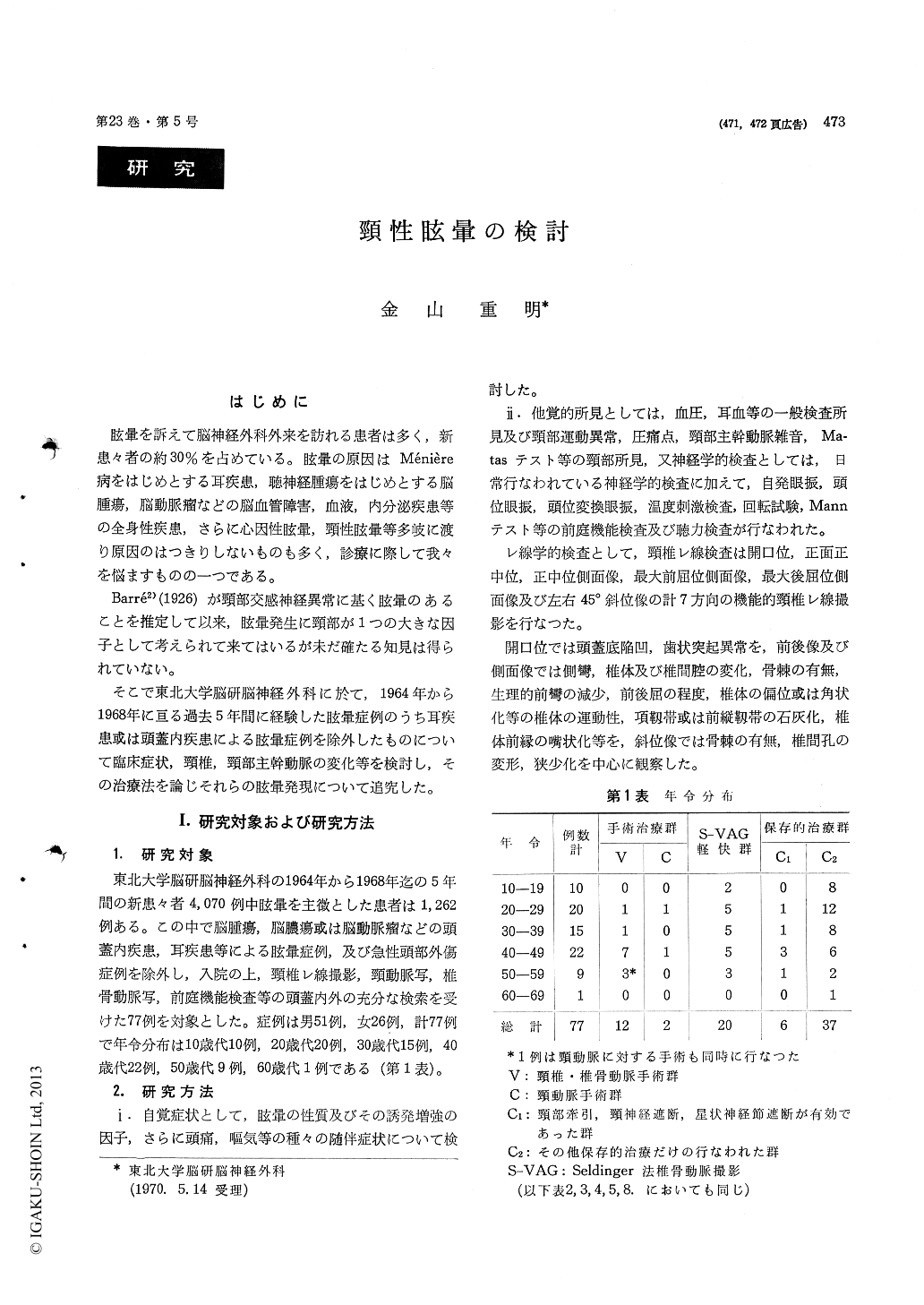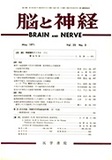Japanese
English
- 有料閲覧
- Abstract 文献概要
- 1ページ目 Look Inside
はじめに
眩暈を訴えて脳神経外科外来を訪れる患者は多く,新患々者の約30%を占めている。眩暈の原因はMénière病をはじめとする耳疾患,聴神経腫瘍をはじめとする脳腫瘍,脳動脈瘤などの脳血管障害,血液,内分泌疾患等の全身性疾患,さらに心因性眩暈,頸性眩暈等多岐に渡り原因のはつきりしないものも多く,診療に際して我々を悩ますものの一つである。
Barré2)(1926)が頸部交感神経異常に基く眩暈のあることを推定して以来,眩暈発生に頸部が1つの大きな因子として考えられて来てはいるが未だ確たる知見は得られていない。
About a third of 4070 patients, who had visited to the Neurosurgical Department of the Institute of Brain Diseases in Tohoku University, complained of dizziness. Seventy-seven patients of them were selected by excluding such diseases as brain tumors, cerebrovascular diseases, acute head injuries, oto-genic diseases, and psychogenic diseases. Therapy and cause of dizziness complained by these patients were discussed here. General, neurological, neuro-tological, and radiological examinations were per-formed strictly for them.
They were classified into three groups as follows ; the first group included 14 cases being received the operative procedures to cervical column, vertebral artery or carotid artery, the second group 20 casesrelieved from dizziness after vertebral angiography by catheter method, and the third group 43 cases treated only conservatively, in which 6 cases were treated effectively with neck traction, stellate gan-glion block or cervical nerve block.
The fact that there were the cases which were relieved from dizziness by the operative procedures to cervical column or vertebral artery proved that such kind of dizziness would be derived from these cervical organs. It was discussed here that stellate ganglion, vertebral plexus and plexus innervating vertebral column would have some connection with dizziness and that in these cases dizziness would not be caused only by vertebral blood flow decrease.
In the most cases of the 1st and 2nd groups, and the above mentioned 6 cases of the 3rd group, diz-ziness was elicited or aggravated by neck rotation, flexion or extension. Although various kinds of nystagmus, spontaneous, positional or positioning ones, were elicited in 57% of the 1st group, in 50% of the 2nd group, and in 43% of the 3rd group, the kind of nystagmus was not so constant in each group. So it was thought that nystagmus was not indicative to cervical dizziness.
The author recognized that vertebral angiography by catheter method was effective for dizziness that might be originated from cervical organs, although this fact has not been reported up to now.
The author recomended here vertebral angio-graphy to the dizziness-patients not having intra-cranial lesions, acute head injuries, otogenic diseases, or psychogenic diseases and treated conservatively with no effect. And then he emphasized that for dizziness, the operative procedures of cervical column, vertebral or carotid artery should be take into consideration, when the conservative treatments or vertebral angiography have been recognized not to be effective.

Copyright © 1971, Igaku-Shoin Ltd. All rights reserved.


